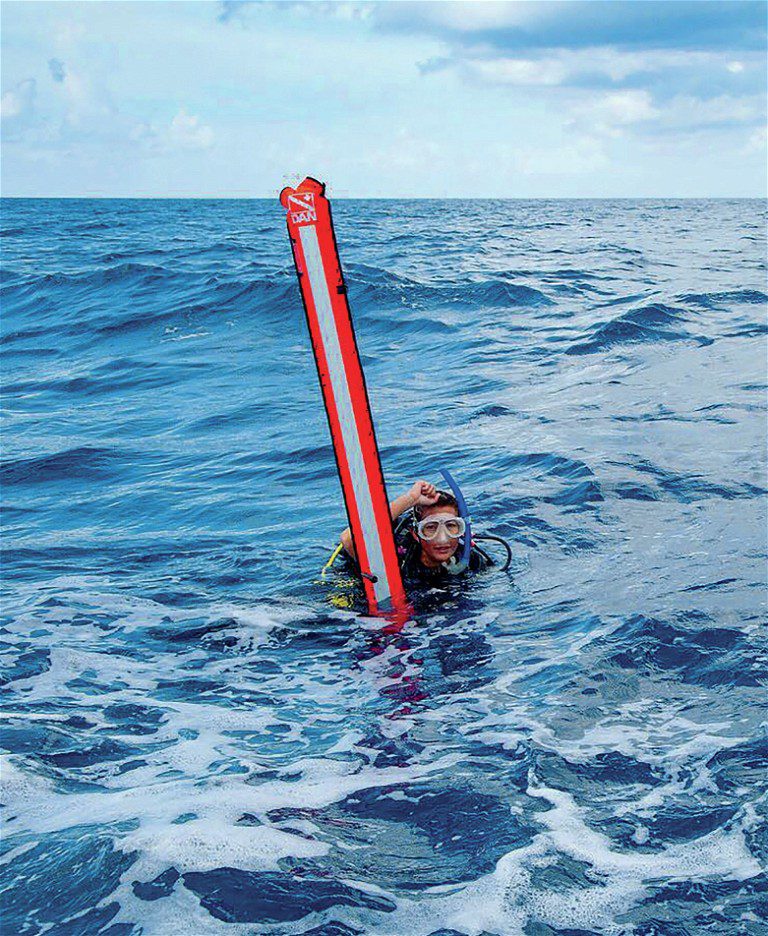The Divemaster and I surfaced, surprised at our distance from shore, with the dive boat nowhere in sight. We spent the next five hours seasick, with nearly two-metre swells pushing us under the surface.
Our hope started to fade as we realised the coastguard boats and helicopters, that we finally spotted, were searching in the wrong area. Currents had carried us far from the dive site. Lightning, thunder and nightfall soon replaced the sunset. The swim that the Divemaster thought was too far was now our only option. We eventually crashed into a rocky, desolate shoreline and began our walk back. As a relatively new diver, I learned many lessons from my ordeal:
- Stay calm. Neither of us panicked. I refused to look at my watch or entertain bad thoughts. I focused on what needed to happen, whether it was fighting the next big wave, deciding it was time to drop our weights, or reminding myself that we would be OK.
- Maintain good fitness. I did three dives that day before being lost at sea. While I hadn’t prepared for that situation, I was grateful that I had recently taken up lap swimming, which had increased my stamina.
- Bring your own safety gear. The Divemaster did not have a flag, surface marker buoy (SMB), whistle or other signalling devices. I had a small SMB and whistle. I now carry a larger SMB that floats upright, and I am researching other signalling devices.
- Someone should know where you are and when to expect you. While I was on this solo trip in another country, my boyfriend realised something was wrong when I didn’t text him after the dive. He called the dive shop and contacted the local authorities for help. The dive shop had not contacted the coastguard or notified my emergency contact that I was missing. It took my boyfriend’s actions to initiate a search and rescue mission.
- Be proactive about your safety, and don’t ignore red flags. I noted several red flags with the dive shop throughout the week, but I had prepaid for more than 20 dives and didn’t want the hassle of changing shops and fighting over a refund. The dive shop didn’t do safety debriefs, share dive plans or use a dive flag. The Divemasters did not have proper gear, and they took children through full penetration wreck dives at 24m and directed divers to leave behind their snorkels. Instead of consciously assessing the shop’s adherence to safety standards, I mistakenly trusted their credentials to mean they would do the right things.
- Understand the risks and that there are bad dive shops. I chose this shop because I found them on a dive association’s website as a highly rated dive centre. The criteria that I had used to select a shop didn’t necessarily translate into reliability and safety. I did what I could to hold the shop accountable with the hope that they would take corrective actions. I wish I could say that my efforts resulted in changes that made future divers safer or that the shop’s high standing dropped, but I can’t. And that’s another important lesson – online information may or may not be accurate, so trust your judgement.
World DAN org
For an extensive range of diving health and safety information and downloadable resources, research studies, incident summaries, and free e-Learning courses, take the time to explore DAN World’s new website.
This article was originally published in Scuba Diver ANZ #58.
Subscribe digitally and read more great stories like this from anywhere in the world in a mobile-friendly format. Link to the article








